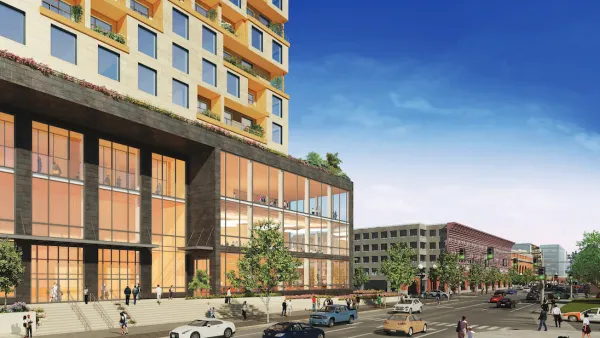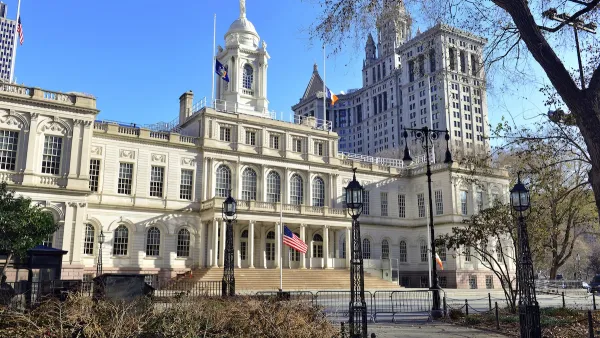Could Vienna's century of experience in creating housing that is both affordable and attractive offers lessons for how the U.S. can address its growing affordability crisis? In the Austrian capital, more regulation, not less, leads to cheaper rents.
While pundits in America lament the role of government regulation in driving up the cost of housing, "[a] unique system nearly a century in the making has created a situation today in which the city government of Vienna either owns or directly influences almost half the housing stock in the capital city," writes Ryan Holeywell. "As a result, residents enjoy high-quality apartments with inexpensive rent, along with renters’ rights that would be unheard of in the U.S."
"The Viennese have decided that housing is a human right so important that it shouldn’t be left up to the free market."
First established in Vienna in the 1920s, "[t]he idea that everyday citizens should have access to not just affordable apartments but also attractive ones -- and that it’s the city’s responsibility to provide them -- continues to this day. There’s a mindset that housing is a way to link residents to their communities and the larger city through design," notes Holeywell.
"Vienna’s government takes an approach to residential development that’s more rigorous and deliberative than many private-sector developers in America. That’s because in the U.S., 'cost is the No. 1 priority,' [architectural historian William] Menking says. In Vienna, it’s just one of four. At the same time, the competition among developers is so fierce -- the result of the city’s land monopoly -- that the result is a very affordable development. 'We were doing some comparisons of public housing in Los Angeles and public housing in Vienna,' Menking says, 'and Vienna was cheaper per square foot than L.A.'”
FULL STORY: Affordable and Luxurious Housing Come Hand in Hand in Vienna

National Parks Layoffs Will Cause Communities to Lose Billions
Thousands of essential park workers were laid off this week, just before the busy spring break season.

Retro-silient?: America’s First “Eco-burb,” The Woodlands Turns 50
A master-planned community north of Houston offers lessons on green infrastructure and resilient design, but falls short of its founder’s lofty affordability and walkability goals.

Delivering for America Plan Will Downgrade Mail Service in at Least 49.5 Percent of Zip Codes
Republican and Democrat lawmakers criticize the plan for its disproportionate negative impact on rural communities.

Test News Post 1
This is a summary

Test News Headline 46
Test for the image on the front page.

Balancing Bombs and Butterflies: How the National Guard Protects a Rare Species
The National Guard at Fort Indiantown Gap uses GIS technology and land management strategies to balance military training with conservation efforts, ensuring the survival of the rare eastern regal fritillary butterfly.
Urban Design for Planners 1: Software Tools
This six-course series explores essential urban design concepts using open source software and equips planners with the tools they need to participate fully in the urban design process.
Planning for Universal Design
Learn the tools for implementing Universal Design in planning regulations.
EMC Planning Group, Inc.
Planetizen
Planetizen
Mpact (formerly Rail~Volution)
Great Falls Development Authority, Inc.
HUDs Office of Policy Development and Research
NYU Wagner Graduate School of Public Service





























